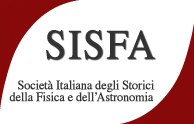Speaker
Description
An unpublished formulation of electromagnetism, motivated by Feynman’s involvement in undergraduate teaching, was sketched by him in handwritten notes, and subsequently completed in unpublished lectures given at the Hughes Aircraft Company in the late sixties.
Starting from the relativity principle, Lorentz invariance of electric charge and the principle of least action, Feynman derives the Lorentz force, the homogeneous Maxwell equations and the expressions of the fields in terms of the potentials, including gauge invariance. Adding a couple of empirical assumptions, i.e. the Coulomb law and the superposition principle, he includes the inhomogeneous Maxwell equations.
We compare Feynman’s approach with analogous treatments which appeared in the literature starting from 1912. Unlike any of the latter, Feynman's approach gives priority to the potentials, reflecting his ideas about the quantum foundations of electromagnetism and of fundamental interactions, as expressed in several of his writings.
Some considerations about the history and foundations of special relativity, which are naturally suggested by this approach, are given. In fact, if electromagnetism is to be developed as an ab initio relativistic theory, special relativity must be approached independently of detailed electromagnetic considerations, as was first done in 1911.
Bibliography
M.Di Mauro, R.De Luca, S.Esposito, A.Naddeo, Some insight into Feynman’s approach to electromagnetism.
R.P. Feynman, Alternate way to handle electrodynamics, (1963).
R.P. Feynman, Electrostatics, Electrodynamics, Matter-Waves Interacting, Relativity. Lectures at the Hughes Aircraft Company; notes taken and transcribed by J.T. Neer, (1967-8).
L. Page, Am. J. Sci. 34, 57 (1912).
P. Frank, H. Rothe, Annalen der Physik 339, 825 (1911).

